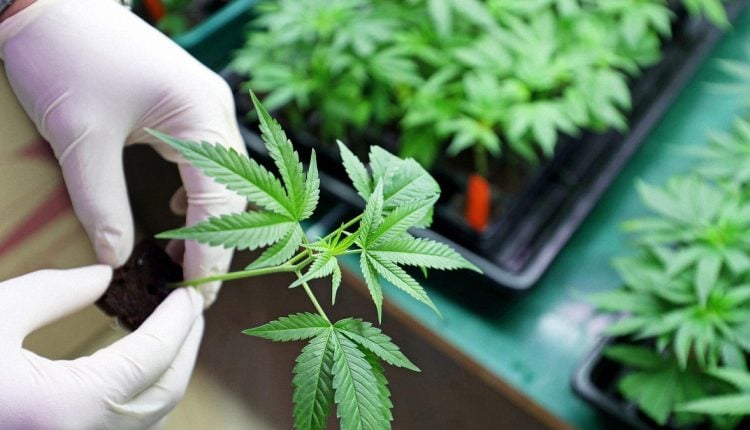As the recreational use of marijuana becomes increasingly legal across the U.S, so does the home growing of it.
Growing cannabis isn’t rocket science. But there is a lot of information you need to know to do it successfully.
Whether marijuana is your medication, your pastime, or a new profession, our guide aims to provide you with thorough information. From setting up your station to nourishing the plants as they bloom, growing marijuana indoors can be a worthwhile journey, and we will guide you through it.
Sort Your Space
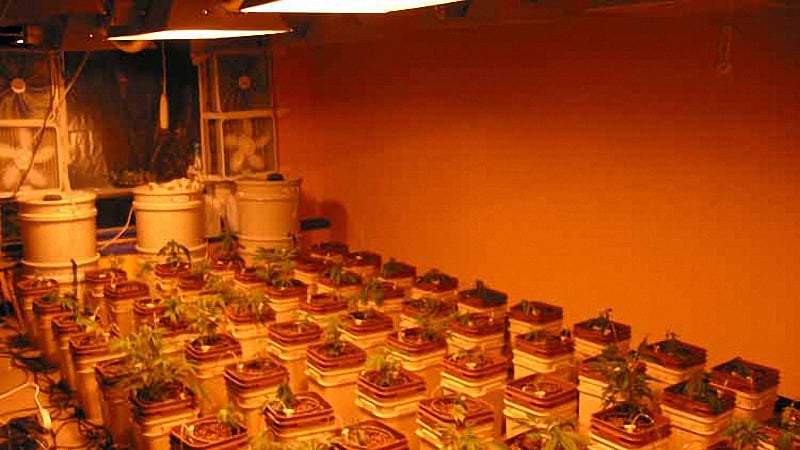
So, in case it wasn’t obvious, you can’t just plant cannabis seeds in a pot and some soil and wait for it to grow. Growing marijuana indoors can be done in multiple ways and spaces. These include a grow room, a grow tent, or greenhouses.
First, consider the amount of room you’re going to need, then plan accordingly. It’s best to start small. There is a learning curve that is inevitably involved when growing cannabis, and as such, there’s likely to be some mistakes made, says Marijuana Break.
Grow Room
Your grow room doesn’t have to be an entire room; it can be a designated space wherever you can find one! Preferably on your property. Living rooms, bedrooms, garages, and an attic can all work as long as you can fit everything you’re going to need. As well, you want to make sure it is clean, ventilated, and the right temperature (we’ll get to this later).
As mentioned, grow spaces don’t have to take up the whole room. Corners, closets, cupboards, and unused rooms can be excellent grow areas as well.
Grow Tent
These are some of the easiest ways to grow cannabis inside. Designed for this purpose, grow tents come almost entirely ready and suitable to get growing. The pre-designed feature is especially handy if they come with ready-to-grow kits, too.
You can find grow tents most commonly online. Just make sure you’re spending your money wisely and appropriately.
Greenhouse
A greenhouse is a way of growing inside, outside. This structure will work best if you live somewhere with a reliable and ideal climate. You will need to tweak your greenhouse if you want anything to prosper. You can find out more about this as you keep reading.
Ensure Optimum Conditions
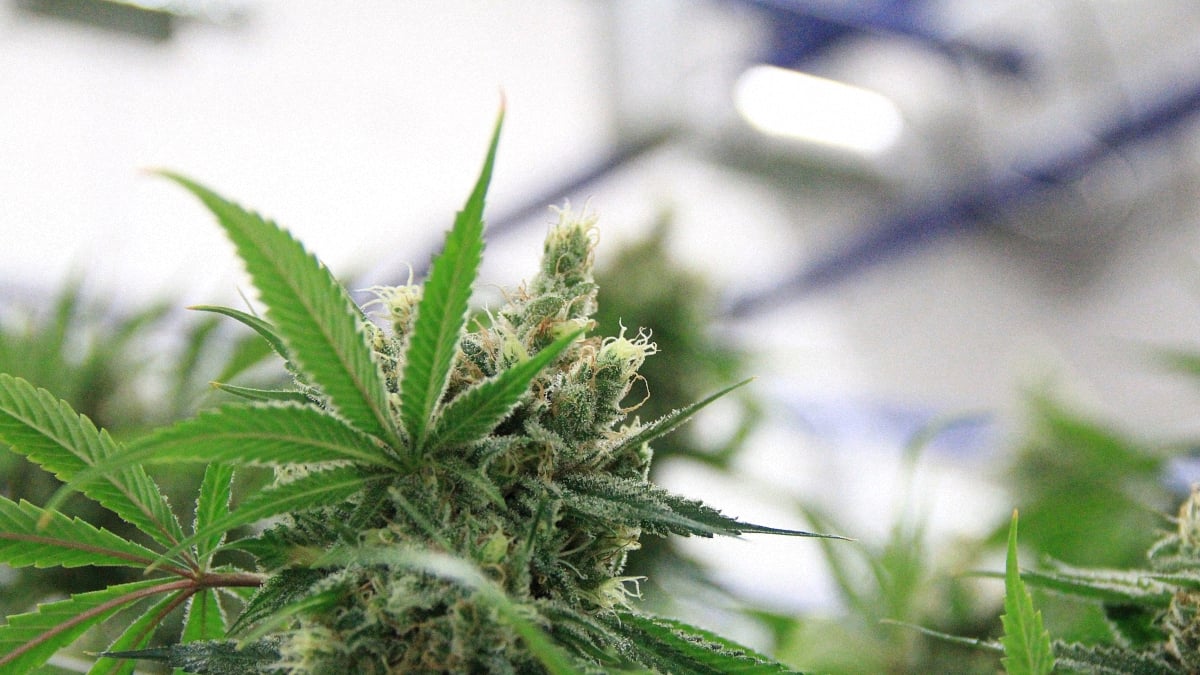
Cannabis growing requires the right conditions. Too much light, not enough nutrients, temperatures a few degrees off – all of these can lead to a failed batch. Make sure you provide optimal conditions by monitoring these factors:
Light
Lighting control is an essential factor in these plants. They do not require constant light as they must have some periods of darkness or ‘rest time.’ Avoid light leaks wherever they are growing. The lighting that your plants will be receiving will be artificial and controlled by you. Make sure to black out any nearby windows nearby. The same goes for if you’re using a greenhouse.
If your plants are exposed to light when they shouldn’t be, they will get confused and start producing male flowers. Male flowers are not desirable for cannabis growers and can create accidental pollination of buds.
Temperature
Like any plant, cannabis requires the right temperature to live. I Love Growing Marijuana states that, initially, with lighting, seedlings need an environmental temperature between 68ºF and 77ºF (20ºC and 25ºC). As they get older, is increases to 82ºF (28ºC). They also recommend when the lights are off, the temperature should be between 59ºF and 72ºF (15ºC and 22ºC).
Ensure it’s generally warm in the designated area but not too hot.
Space
The space you will need for growing marijuana indoors will include not only the plants themselves but also ducting, fans, lights, and other equipment, too. Also, pot can double or even triple in size when growing, so you’ll need to anticipate this.
Allow for around one square foot per plant. You must remember that you won’t be starting with a factory-style quantity. Get to grips with the growing process before you go large.
Cleanliness
Providing a clean space for your marijuana plants is crucial. Cannabis is a bio-accumulator. This term means marijuana absorbs elements or chemicals – like heavy metals – from its environment, explains Encore Labs. So, keep everything clean and free of contaminants.
Not only is it critical to make the area initially spotless, but clean around the plants weekly to ensure the hygiene is maintained throughout.
Convenience and Privacy
You should be checking the plants almost every day. As such, it’s best to grow them in a place that’s easy for you to access. According to Leafly, beginners will ideally need to check-in several times a day.
It will also work in your favor to keep your potted pals away from neighbors or unwanted visitors. There’s potential for theft if someone can see you’re growing marijuana.
Let in the Light
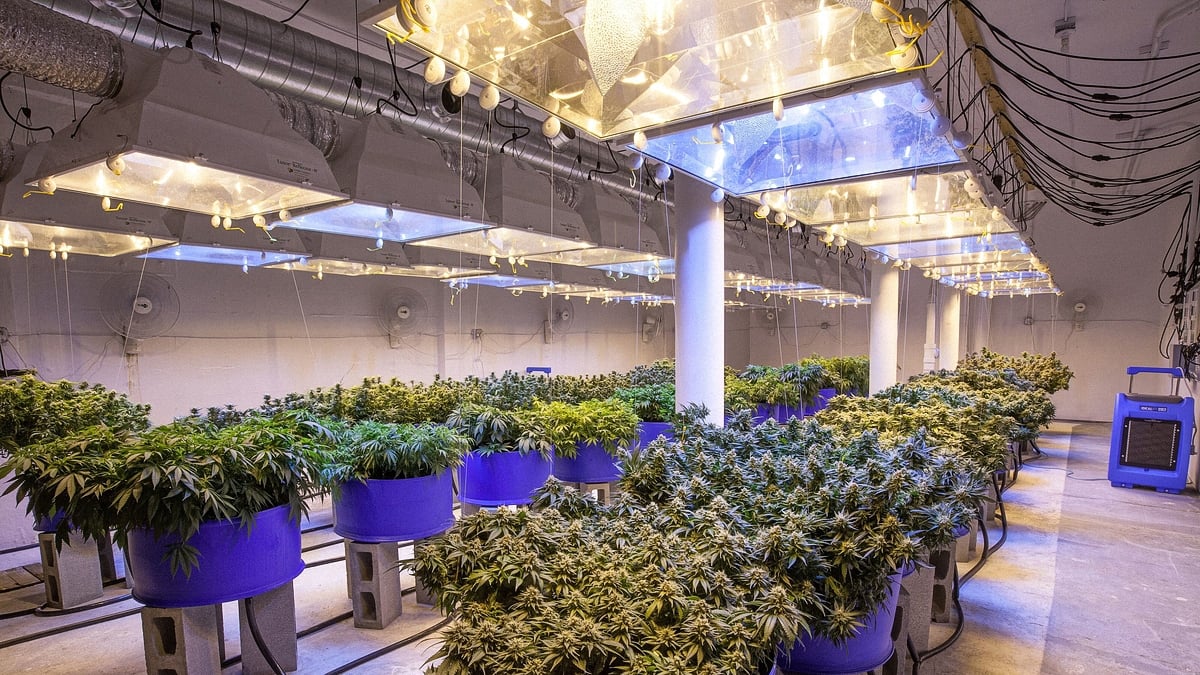
You’ve heard of photosynthesis, right? Well, this is what your plants will be doing if they are growing successfully. As they will not have natural light, artificial light is what you’ll be needing to provide.
Grow Lights
The light you use to grow your cannabis is one of the most critical factors. Lighting will be the component in which you will want to invest the majority of your money. Your light source also can be a good source of warmth for the marijuana. There are different types of light you can use to ensure the best conditions.
Light Emitting Diode (LED)
LED lights are highly efficient grow lights. They don’t consume as much energy and don’t create too much heat. They generally lead to better quality plants and higher yields and generate more wavelengths over the spectrum of light.
The drawback is that they cost almost ten times more than a good HID setup, says Marijuana Break. However, if you’re willing to splash the cash, this might be your best option. Just be careful you don’t buy any fake LED lights, which are prevalent online.
High-Intensity Discharge (HID) Lights
These are the most commonly used lights for growing marijuana indoors. They provide an intense amount of light (who would have guessed?), ideal for growing big and healthy plants. You can buy these in a range of wattage, depending on your growing needs.
- High-Pressure Sodium (HPS) and Metal Halide (MH) are your standard entry-level lights. MH provides and blue/white toned light, which is ideal for the early stages. HPS emits a red/orange toned light, which is best suited to the flowering stages of cannabis.
- 400 watts will suit up to three plants in a 3x3ft area
- 600 watts are ideal for up to 4 plants in a 5×5 area
- 1000 watts is the strongest of the standard lights and can aid in growing up to 6 plants in a 6×6 space.
Fluorescent Lights
These aren’t great for energy consumption. However, like LED lights, they don’t produce much heat. Therefore, they won’t dehydrate your plants too much. Their varied spectrum allows for an optimal growing environment throughout the different stages of growth.
They don’t allow for a massive yield of weed, but they are ideal for those growing marijuana as a hobby or low-scale personal use.
Induction Grow Lights
These are a more energy-efficient and durable version of fluorescent lights. These are hard to find, though, and are of limited availability.
How to Regulate Light for Your Pot
When growing marijuana indoors, you want the light supply to be on for around 16-20 hours a day. The duration matters, especially in the early stages. Once the cannabis starts to flower, the light should be on for 12 hours a day and off for the other 12.
You can adjust this yourself if you can find not only the spare time but the correct time each day. If not, this is when a light timer will come in handy.
Grow Medium – Hydroponics vs. Soil
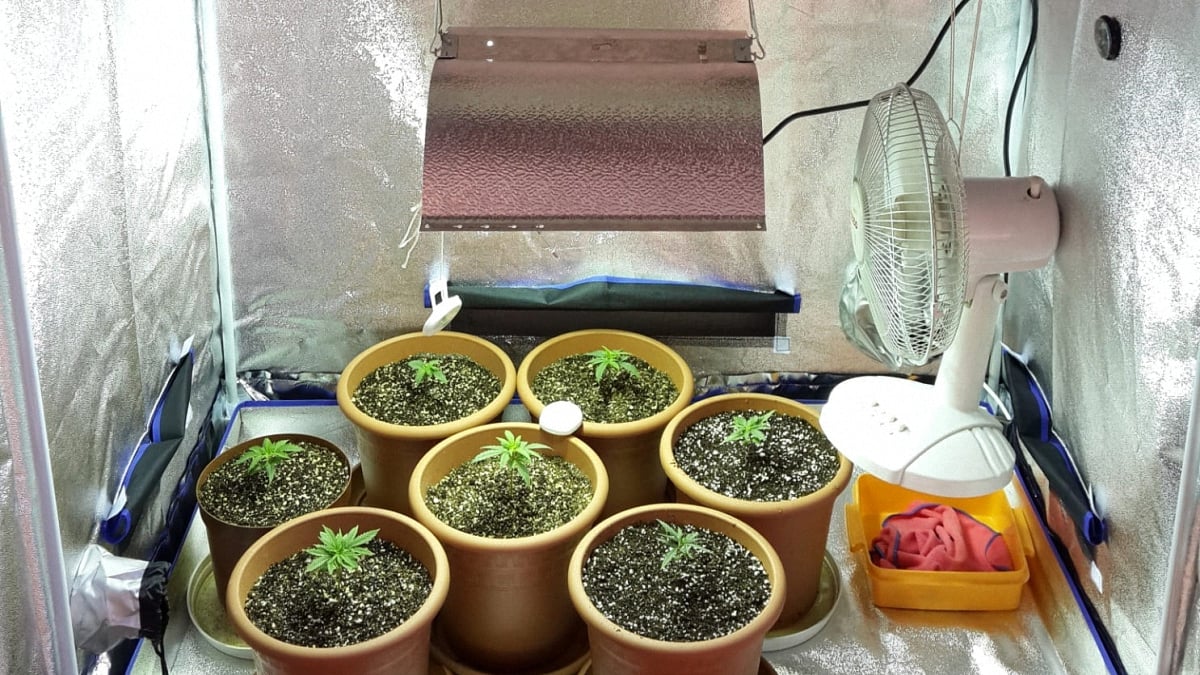
Now that you’ve sorted our your lighting system, you’ll need to decide on the medium in which you want to cultivate your plants. There are two options: soil and hydroponics.
Soil is the recommended material to get your cannabis blooming, especially for first-time growers. Soil is readily available, easier to use, cheaper, and things are less likely to go wrong with it. You don’t need any fancy soil, however. Pre-fertilized soil is the best option.
Pre-fertilized soil can grow cannabis from beginning to end without any extra added nutrients if used correctly. You can make this yourself by combining bat guano, worm castings, and other ingredients with a nourishing soil, says Leafly.
So, let’s have a look at hydroponics. What is hydroponics? Hydroponic comes from the Latin words ‘working’ and ‘water.’ It is the art of how to grow plants without any soil, to paraphrase Simply Hydroponics. With this process, the plants can receive nutrients and water through water flow and drainage systems.
There is a variety of available materials to use as a soil-substitute for hydroponics. Soil substitutes include vermiculite, Rockwool, coco coir, perlite, and expanded pebbles. Rockwool is a material that many commercial growers consider to be the best substrate for this kind of production. Rockwool holds water and retains the right amount of air space due to its unique build, says GPN Mag.
The benefits of a hydroponic system are that nutrients absorb more quickly through osmosis, and it can result in larger yield. Commercial hydroponic mixes will contain the ideal amount of nutrients for your marijuana plants. Nevertheless, you must keep in mind that these systems are expensive, and plants can react rapidly to over or underfeeding.
Equipment
So, you’ve seen we have mentioned growing equipment a couple of times now, but what does that entail? Once you’ve decided on your medium, there’s still more to think about and purchase! Fear not, we’ve listed some of the extra pieces of equipment you’ll need for growing marijuana indoors.
Fresh Air Source
Like any other living and growing thing, weed plants need a flow of fresh air to survive. You can use an oscillating fan within the grow space or an exhaust fan placed at the top of the room. Using a filtered air inlet on the other side of the room on the floor also will be beneficial to keep fresh, cool, and circulating.
You can use a charcoal filter in your fan to mask the smell of the pot if that’s going to be an issue where you are. Remember, although they need fresh air, you must try and maintain the recommended temperature for the plants. Temperature ranges should be 75-85ºF with the lights on and 55-75ºF with the lights off.
Thermo-Hygrometer
You will need a device to monitor the temperature within your grow space. You can get a basic thermostat for your grow room, but thermo-hygrometer works better. This device measures both humidity and temperature.
Humidity is a tricky one when cultivating cannabis. The Cannabis Business Times explains that dry conditions, as well as low humidity levels, create inviting environments for pests like spider mites. They also found in a study that for clone rooms, 19 percent of research participants said the ideal humidity level is 56%-60%.
Test Kit or pH Meter
These devices help with checking the pH level of your water solution or soil. In soil, marijuana needs a pH of around 6-7 and between 5.5-6.5 with a hydroponic method.
If the pH level gets out of the optimum range, your plants might go into something called a lock-out. In this condition, the plants won’t be able to absorb the nutrients they require. So, make sure to test regularly!
Container
The container you choose will depend on the medium you’re using and how much you intend to grow. If you’re using soil, then a five or ten-gallon bucket will be your best option. Make sure that whatever pot or bucket you pot it in, there are holes at the bottom to ensure airflow. Marijuana plants are sensitive to waterlogged conditions. You can purchase smart pots that allow aeration for your greenery.
If you’re opting for hydroponics, a flood-and-drain tray filled with Rockwool or clay pebbles is the best way to go.
Now to Get Creative
Find Your Strain
If you’re reading through this guide, you probably know how many varieties of pot there are. Choosing the strain(s) you want for growing marijuana indoors depends on what you want out of it. You’ll want to look into a seed bank or trusted breeders who can provide you with the right strain of weed that you’re seeking.
There are three main types of strains: sativa, indica, and auto-flowering strains. These all produce different kinds of highs and have various benefits. The selection of any strain depends on the reasons for which you’re using or selling it.
Let’s look at the criteria of each of the three main strains:
- Sativa: Sativa plants are more resistant to heat but cannot manage with cold temperatures. They grow into tall, long buds. Their effect is more of a head high that feels easy and upbeat.
- Indica: These strains will be better in cold, opposed to hot temperatures. They grow into short and dense buds. Their effect is more of a body high that is heavier and more relaxing.
- Auto-flowering strains: These derive their name because they do not require a light switch in the flowering stage. They flower automatically. They tend to be a hybrid of Sativa and Indica and small in size. They have a shorter cycle, which makes them suitable if you’re just starting with growing marijuana.
Looking online for your desired strain is not much different from clothes shopping. A good breeder should have the product specification listed and the features of the strain.
Male and Female Plants
It may seem odd, but cannabis plants are gendered, just like us! It’s worth mentioning because you want to make sure your crop is not a male plant. It is only the female crop that can produce potent buds, says Marijuana break. Only the female plant will get you high. The male plant contains seeds, and you’ll want to keep it away from the females.
If the female plants manage to get pollinated by the males, then they, too, will produce seeds and be redundant for providing the kind of pot you want.
So, how can you tell the difference? Male marijuana flowers produce small bell shapes that hang down while females create tear-shaped flowers with two pistils. These are usually white, Alchimia explains.
This situation is when choosing clones over seeds might be more beneficial for growers. It reduces the chances of coming across unexpected and unwanted male plants.
How to Care for Your Plants as They Grow
You’ve got your grow room and lights sorted. The conditions are just right, and your plant is now ready to sprout. Now, you’ve got to make sure you look after them as they grow.
Pot isn’t like most other plants and will take a bit more than a splash of water here and there to bloom. Growing marijuana indoors means you will require a good load of fertilizer and nutrients for your greenery. There are seven top nutrients – or micronutrients – that your crop will require:
- Potassium
- Calcium
- Nitrogen
- Magnesium
- Phosphorus
- Copper
- Iron
If you’re already using the nutrient-rich ‘super-soil,’ then you don’t need to worry too much about feeding your plant more of these. If you’re not, then you can usually find these packed into a liquid or powder form. Mix these nutrients with water and use them on your plants at least once a week. Do not overfeed as this can damage the crop.
Some plants also need more magnesium and calcium than others. As such, you may need extra of these nutrients. You will get to know your plants as you go through the process, so don’t get too hung up on perfect measures.
Water
Cannabis plants love water like any other plant. However, again, like any other plant, do not over-water them! There’s no specific amount set for watering marijuana. It’s good to try some commonsense and evaluate day-to-day what your plant needs. Don’t let it get too dry but don’t water it more than once or twice a day, max. The amount of water necessary also will depend on the size of your plants.
Just ensure the leaves don’t start drooping. If the soil (if you’re using soil) feels dry to touch, then you’ll need to moisten it with water. Remember, weed that has been grown indoors in the soil will not get any rain so that you will be its only provider of H2O.
If you’re using hydroponics, the game is a bit different. Check the feed lines and pumps regularly. The reservoir should contain oxygenated water and be free of pathogens, says Zamnesia. Ensure you also get nutrients to your plants through this system, too.
Last But Not Least – Harvest
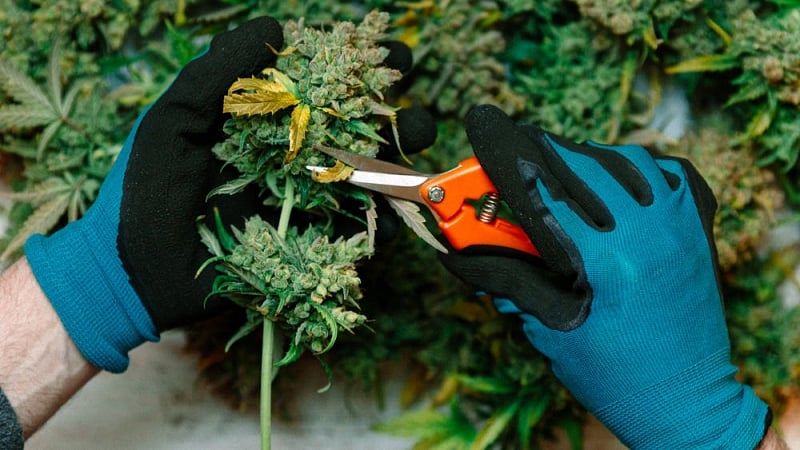
Once your plant has seen through all it’s growth stages, which are:
- Germination
- Seedling phase
- Vegetative phase
- Pre-flowering
- Flowering and fruition
It’s now time for the bit you’ve been awaiting: harvest.
Cannabis takes around three months to flourish fully, and there will be specific indicators that it’s ready for use. The plant’s growth will have slowed down if not halted. The trichomes, which are the delicate hairs found on the buds, will have turned from white to brown. This characteristic may be new to first-time growers, but long-time smokers will be familiar with aesthetically. You will also notice the aroma is strong.
Cutting
You should note that you can’t just snip at these little buds and crush them up straight into a joint. You have to be meticulous and careful with trimming your plant. Chop branch by branch or the entire thing by the stem.
Keeping the branch intact, you will want to get rid of the water leaves. These are the leaves that are the pot symbol. Once removed, you can focus on the smaller sugar leaves. While not everyone cuts these off, it will make your batch purely nugget based.
Top tip: Sugar leaves can be put to the side and used to make hash, hash butter, or wax as they are brimming with THC.
Drying
Drying is simple and can occur in the room where they were initially grown. Just make sure the area is dark and warm. A temperature between 60-70° F (or 16-21° C) is optimal for drying. Allow a moderate amount of humidity, too. An atmosphere that is too dry will result in a rapid drying process and, therefore, a harsher smoke.
This process takes around 7-12 days, depending on the bud size. Royal Queens Seeds explains that there is a straightforward test to know if the buds are dry. Take a little branch and bend it. If it snaps, the buds are dry enough.
Curing
Curing involves storing the weed in an airtight jar for up to thirty days. Store these at the same temperature as when drying the buds. Curing helps break down the chlorophyll. Imagine when a wine is aged to make it taste better—that’s what curing is!
Wrap Up
And there you have it: your all-you-need-to-know guide to growing marijuana indoors. The process can be enjoyable and educational. Growing can give the pot lovers a whole new experience with their beloved green good stuff.
